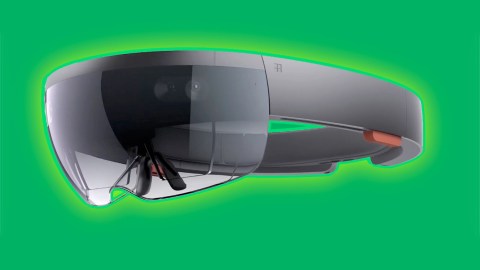Microsoft to supply U.S. Army with thermal, night-vision AR goggles

- Microsoft is set to make prototypes of AR headsets that will feature capabilities including night vision, thermal sensing and instruments that measure vital signs.
- The military already uses AR in some applications, but it’s yet to implement the relatively new technology on a large scale.
- It’s unclear whether Microsoft employees will protest the recently announced contract.
Microsoft is set to supply the U.S. Army with augmented reality goggles to make soldiers more deadly in combat by helping them “detect, decide and engage” enemies, according to a government document.
The technology giant won the $480 million contract to supply prototypes to the military earlier this week, according to a Bloomberg report. Eventually, the two-year contract could lead Microsoft to make more than 100,000 AR headsets for the Army.
“Augmented reality technology will provide troops with more and better information to make decisions. This new work extends our longstanding, trusted relationship with the Department of Defense to this new area,” a Microsoft spokesman wrote in a statement.
The prototypes will likely be something like a modified version of Microsoft’s HoloLens, a consumer-grade AR headset that has a self-contained Windows 10 computer and currently costs upward of $3,000. In a government proposal written before Microsoft was announced as the winner, the Army expressed interest in buying AR headsets with night vision and thermal sensing, hearing protection, concussion monitoring, and instruments that measure vital signs like breathing and “readiness.”
AR in the military
The U.S. military currently uses AR in headsets for fighter-jet pilots and for ground soldiers in training scenarios, but it’s yet to implement the technology on a large scale. This new deal, along with a recent surge of demand for AR in the defense sector, will likely change that. The AR/VR defense market is estimated to grow to $1.79 billion by 2025, more than tripling its value of $511 million in 2017, according to a 2018 report called Military Augmented Reality Market to 2025.
As the U.S. augmented reality company Jasoren wrote in a blog post, AR could benefit the military through:
- Increased situational awareness
- Less costly combat training
- Safer training environments
- More accessed mission rehearsals
- Terrain diversity and customization
- Real-time targeting aid
- Enhanced spatial awareness
- Engaging mission planning.
Will Microsoft employees resist?
It’s a virtual certainty that the military will someday adopt these technologies on a large scale. But what’s unclear is how Microsoft employees will react to the news in the coming weeks, especially in the light of the recent walkouts by Google employees due to their company’s involvement in Project Maven, in which Google is helping the Department of Defense better analyze drone footage, and Project Dragonfly, a deal with the Chinese government to build a censored search engine in China.





